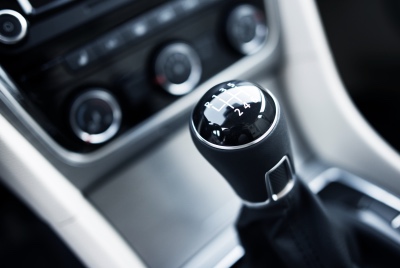Is buying a used car always a crapshoot? Are there ways to pick out a good one in a haystack of lemons? When it comes to buying a used car, there are ways to determine whether or not a vehicle is good and if it fits your needs. There are actually many benefits to buying a used car over a newer version. Some of the body styles of older models are actually more attractive than the newer ones and you get the benefit of a lower price tag.
If you are excited about buying your next car, but get overwhelmed when you step into the dealership’s showroom, you’re not alone. What was an exciting adventure a few minutes ago can turn into a confusing ordeal if you’re not prepared for it. However, there is light at the end of the tunnel. By preparing yourself ahead of time and doing some research, you can feel cool and confident when meeting the salesman and discussing your preferences.
Consider these 7 tips when searching for a used car to buy this year. It will help you make an informed choice and ensure that you get a good vehicle that is worth the money you have invested in it.
1. Don’t Jump to Buy - Be Patient
The price of a new car can range from $36,718 with 6% interest on the low end to $44,205 on the high end. One way to bring the cost down on a vehicle you have your eye on, is to wait a year and see what the price is then. Twelve months makes a big difference when it comes to pricing. Vehicle manufacturer’s often offer rebates and incentives on their remaining inventory of current year models, which means a price drop if you wait until the Year’s End sales. A 2019 will cost less than a 2020 or 2021 model, and a 2018 will be even less. It is worth your while to wait.
You can save a lot of money by waiting a year to buy the car of your dreams. However, this doesn’t apply to the luxury car series like Bentley or Mercedes. Luxury models hold their value longer than others. You’ll be hard pressed to find a good deal there unless you skip the luxury model and go for a compact.
2. Choose the Right Time
When you see the car you’ve been wanting in the showroom it can be so hard to wait. You’re like a kid in a candy store, you want it now, not later. But remember, waiting until the price comes down is going to save you money and net you a better deal in the long run. You’ll pay less overall and your monthly payments will be smaller.
When it comes to the perfect time to buy, your best bet is to time your purchase to hit on the times that dealerships have their big sales like March, June, September and December. These are the best months to buy because dealers need a certain percentage of sales per quarter and will often mark down vehicles for quick sale to meet their quarterly bonus.
The perfect time would be one of the months above, around the middle of the month, and not on a weekend. Salesmen are often motivated to make deals when their bonuses are on the line. Once the quarter has passed there is no more motivation to reduce the price.
However, buying from a private seller doesn’t count here. They don’t act like business. The trick is to monitor your chosen car price for a few months. If it’s going down, you can wait. If it starts growing, wait no longer.
If you are considering buying from a private seller these timing considerations don’t apply. For that, you would have to watch the price and wait until it comes close to your price range.
Wait until the price comes down to its lowest point and buy before it goes back up. This is a tricky tactic though. People will inflate the price when something is in-demand.Keep the season in mind as well, it may be cheaper to buy an SUV with 4-wheel drive for mountain roads in the summertime when everyone else is buying convertibles.
3. Determine Your Needs and Preferences
You may be totally in love with a certain vehicle but is it practical for your lifestyle? You’ll need to ask yourself some questions to determine what you really need versus what you want. You can combine needs and wants into a car that fits your needs, your budget, and your love for the car itself.
What are your needs?
Putting aside your excitement about cars for a minute, what type of vehicle do you really need? Do you want a family car, or one just for yourself? Do you drive mostly in the city, or are you an avid weekend mountain-climber? Do you require 4-wheel drive, or will you be towing a trailer? These are all considerations that must go into choosing your perfect vehicle.
Maybe it just needs to run, take gas, and have a few miles left on the engine if your needs are simple. Depending on what you’ll be using it for, you should list your vehicle preferences and why you want these features.
Diesel or Hybrid Electric?
The type of fuel you prefer can determine the types of cars available to you. It is worth it to check into rebates and incentives for electric cars, and whether or not you get a tax break at the end of the year. Gas and diesel engines are plentiful, but if you want something more eco-friendly, electric may be the way to go.
City driving or long commutes?
Do you do most of your driving around town with occasional weekend trips? Or do you have long weekday commutes out of town? It should have enough horsepower for highway driving and be able to fit into small parking spaces in town. Gas mileage should also be a consideration.
Do you need trunk space?
If you have children with carseats and strollers to stow, having a larger trunk is a necessity. If the most you pack into the trunk is a few grocery bags and your day pack, you can make do with a smaller trunk.
4. What is your desired price range?
A few things you’ll need to consider is your budget and overall price. There is the price you want to pay for the car, as well as the cost associated with owning that vehicle. Fuel consumption will be a big factor along with insurance premiums. How many miles to the gallon does your preferred vehicle get? How often do you fill up? Insurance costs may vary a little bit between the vehicle you currently own and the one you want to buy. You can get the figures from your insurance company by giving them the year, make, and model of the car you plan to buy.
Then there are taxes, fees, and selling prices. You will have the price of the vehicle as well as dealer fees, taxes and title costs. Tax is determined by the vehicle’s fuel type, engine power, weight, and model. If you want premium features they will cost extra.
5. Be Willing to Negotiate
Most people hate to haggle over price, it seems demeaning but is actually a common practice. You should come up with a minimum and a maximum price that you won’t go over. Start out at the low price that you really want and be willing to go as high as your maximum if necessary.
Dealers are used to negotiating prices and will do so when properly motivated. You can choose a couple of dealers that have the same car and see what the best price is between them all. If the salesman knows you’re looking at the same car at one of their competitors' sites, they may be more inclined to offer you a better deal. Competition and sales motivate sellers the most.
There is only so far you can go with discounts and incentives though, be prepared to walk away if necessary. If the vehicle has already been discounted and the seller is trying to pressure you to accept the price, don’t give in. Be prepared to wait until the price is right.
Decide if close is good enough. At some point the seller may say they cannot go any lower in price. If they do, ask them if you agree to the deal at the current price, will they throw in something extra? Dealers like to offer free oil changes and minor service discounts as incentives. They may also offer you new tires or snazzy rims. It’s still a good deal, it’s just packaged differently.
6. Look at the Car from An Investor’s Perspective
When looking at the vehicle in person, look at every aspect of it and the issues that may come with ownership. It’s not enough to just love the design or the interior, you need to look at it as an investment. Give it the once over on everything from the tires to the wiper blades. This is a car you expect to be driving for at least the next 10 years so it should be in good condition and last a while.
Age and wear and tear. If it is only a year or two old it should be in great shape and have plenty of life left in it. The odometer will tell you how much wear the engine has had. Most people drive their cars an average of 15,000 miles per year. If the odometer readings don’t match the age of the vehicle, ask your dealer to check on it. Numbers that are too high or too low are questionable.
Odometer readings can be wrong. It was an old practice to change the odometer readings on a car before selling but that is fraud. A vehicle report from Carfax should show the history and correct odometer readings of the car. It is a good idea to do this before buying the vehicle as 450,000 vehicles are sold each year with false odometer readings.
Examine every inch of the vehicle from front to back. Carefully check each and every blemish or crack on the exterior and interior of the car. Dents, scratches, a missing bolt, torn seat belt, or pieces of glass on the floorboard or under the seat, can alert you that the seller is not being totally honest about the car’s history.
Are there any oil leaks? Do the doors open and close smoothly? Does the GPS work? Check everything and try out the technical gadgets inside to ensure that everything is in working condition.
Are the tires good?. Test the tread depth with a penny to see if there is still enough good tread on them. Do they have cracks or worn spots? This may mean they will need to be replaced soon.
7. Insist on a Test Drive
This is the fun part of car buying. Get in a take it for a spin around the block. You need to drive the car yourself to see how it handles and determine if it will suit your needs. Most often, as long as you have a valid license and insurance there shouldn’t be a problem with test driving the car yourself. It’s a great opportunity for you to get a feel for how it drives and see if you’ll be happy driving it on a daily basis.
This is the real test. Does the seat adjust? Is it comfortable to ride in? Do you hear any engine noises while turning? Do the pedals feel sturdy? If it is a manual, does the clutch and shifter work smoothly? These are all things to look at once you're actually driving the vehicle. Make note of anything out of the ordinary like if it veers to the left because that has to do with the vehicle alignment.
To Buy or Not to Buy
When it comes down to deciding to buy or not, if the car meets with your expectations and everything is in good working order then you are ready to decide if you still want to buy it. Sometimes finally getting the opportunity to drive the car you’ve been wanting for so long reveals that you don’t like the way it drives. You can always change your mind if there are things about it you don’t like.



